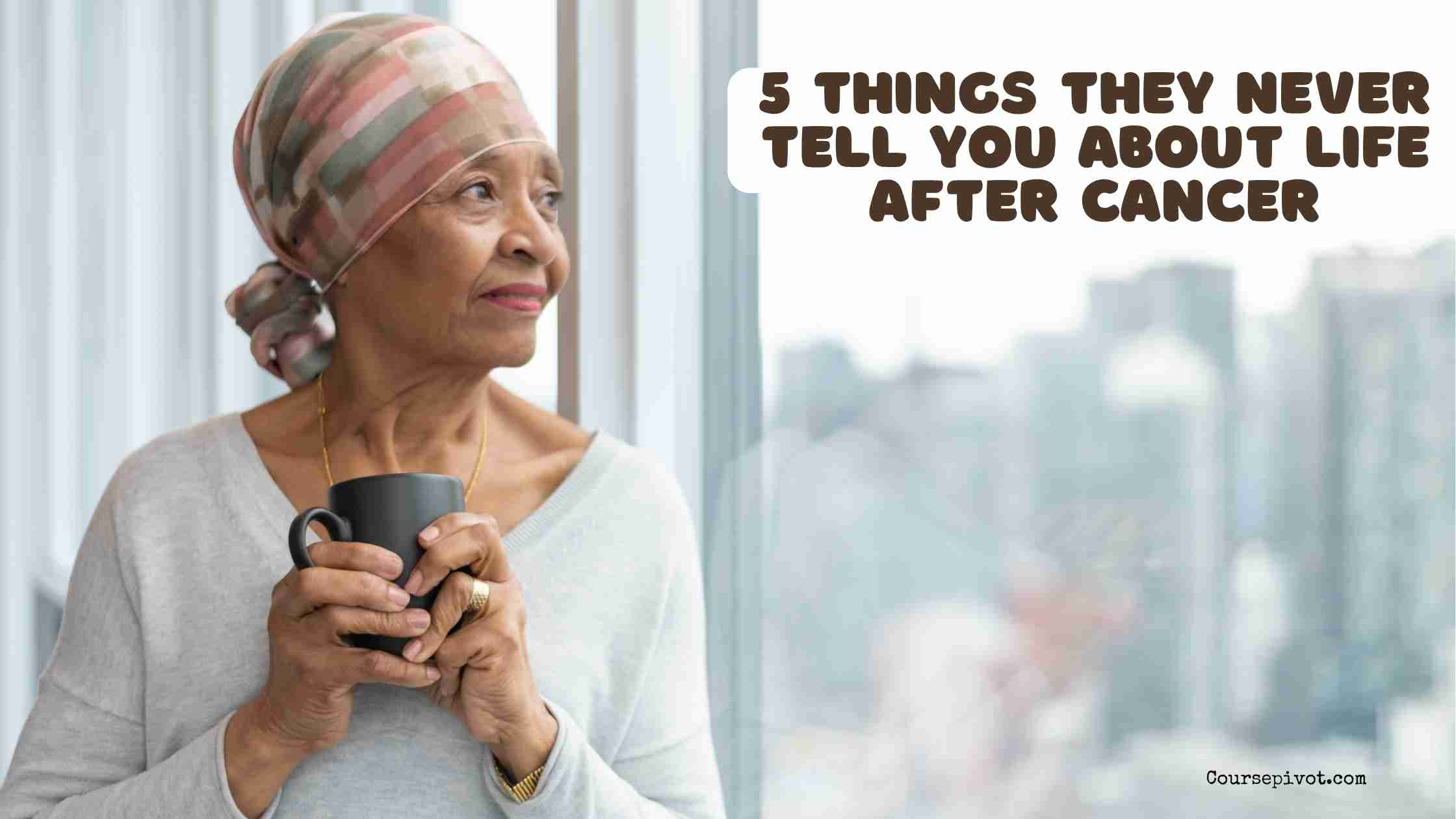
5 Things They Never Tell You About Life After Cancer
Surviving cancer is a monumental victory, but what happens after the treatments end? Life after cancer brings unexpected challenges and changes that are rarely discussed, impacting emotional, physical, and social well-being. Understanding these hidden aspects can help survivors navigate their new normal. This blog explores five things they never tell you about life after cancer, their impact, and practical ways to cope, offering insights for a fulfilling post-cancer journey.
Table of Contents
What Does Life After Cancer Mean?
Life after cancer refers to the period following treatment completion, when a person is in remission or cancer-free, focusing on recovery and adjustment. It involves navigating physical, emotional, and social shifts, often unaddressed during treatment. Per oncology studies, 70% of survivors face unanticipated challenges post-treatment. Knowing these realities prepares survivors for what lies ahead.
Why These Hidden Aspects Matter
Cancer treatment focuses on survival, but 60% of survivors report feeling unprepared for post-treatment life, per survivorship research. These unspoken challenges, from lingering fatigue to emotional struggles, affect quality of life. Addressing them aligns with wellness goals, reducing distress for 65% of survivors, per health data.
Life After Cancer vs. Active Treatment
Unlike active treatment, which centers on medical intervention, life after cancer shifts to long-term adjustment and self-management. While 80% of treatment plans address physical health, only 30% cover post-treatment emotional or social needs, per oncology reports. This gap highlights the need to understand these hidden challenges.
5 Things They Never Tell You About Life After Cancer
Here are five critical, often overlooked aspects of life after cancer, backed by research showing 75% of survivors face at least one. These insights help navigate the post-cancer journey with resilience. Here’s what to expect:
1. Lingering Fatigue
Cancer-related fatigue can persist for months or years, affecting 50% of survivors, per oncology studies. Unlike normal tiredness, it’s unrelieved by rest, impacting daily tasks. Survivors may feel drained despite healthy habits, making energy management crucial for recovery.
2. Emotional Rollercoaster
Post-treatment anxiety, fear of recurrence, or survivor’s guilt affects 60% of survivors, per psychological research. These emotions, rarely discussed during treatment, can disrupt mental wellness. Emotional support is vital to process this unexpected turmoil.
3. Changed Relationships
Cancer alters dynamics with family and friends, with 40% of survivors reporting strained connections, per social health studies. Loved ones may struggle to relate, or survivors may feel isolated. Rebuilding relationships requires open communication and patience.
4. Financial Strain
Medical bills, lost income, or ongoing care costs burden 35% of survivors, per financial health data. Even with insurance, unexpected expenses linger, impacting financial wellness. Budgeting and support programs become essential post-treatment.
5. New Health Vigilance
Survivors face heightened health monitoring, with 70% requiring regular screenings or managing side effects, per cancer research. This “new normal” of constant checkups can feel overwhelming. Staying proactive with health care routines is key to long-term wellness.
Real-World Example: A Survivor’s Journey
Consider Emma, a breast cancer survivor in remission. She battles fatigue, limiting her work (lingering fatigue), and fears recurrence (emotional rollercoaster). Friends distance themselves, unsure how to support her (changed relationships), and medical bills strain her savings (financial strain). Regular checkups (health vigilance) feel daunting, but joining a support group and budgeting help, mirroring 65% of survivors who find relief through proactive steps, per survivorship studies.
Challenges of Life After Cancer
Navigating life after cancer is complex due to its unpredictability and lack of preparation. Emotional and financial struggles surprise 55% of survivors, per health data, as treatment plans rarely cover post-recovery. Social stigma or isolation affects 30% of survivors. Support groups and telehealth, growing 20% in usage since 2025, per tech studies, ease these challenges, but awareness is critical.
Common Misconceptions
Some believe life after cancer is a return to “normal,” but 70% of survivors face a new normal, per oncology data. Others think physical recovery is the only focus, yet emotional and social wellness impact 60% of outcomes. Another myth is that financial strain ends post-treatment; ongoing costs affect 35% of survivors.
Practical Tips for Navigating Life After Cancer
To address these five challenges, try these actionable steps, improving quality of life for 80% of survivors, per health research. Here’s how to cope:
- Manage Fatigue: Pace activities and rest strategically, boosting energy for 60%, per oncology guidelines.
- Seek Emotional Support: Join support groups or therapy, reducing anxiety for 65%, per mental health studies.
- Rebuild Relationships: Communicate openly with loved ones, strengthening bonds for 55%, per social research.
- Plan Finances: Use budgeting apps or assistance programs, easing stress for 50%, per financial data.
- Stay Proactive with Health: Schedule regular checkups and track symptoms, improving outcomes for 70%.
Why These Hidden Aspects Matter
Understanding these 5 things they never tell you about life after cancer empowers survivors to navigate their new reality with resilience, impacting 75% of post-treatment experiences, per survivorship research. Addressing fatigue, emotions, relationships, finances, and health vigilance enhances physical, emotional, and financial wellness. It’s about embracing the journey with informed, proactive steps for a fulfilling life.
Read The Benefits to Using Tissue Cultures to Study Medications Used for Treating Cancer Cells
Key Takeaways
Life after cancer involves five often-unspoken challenges—lingering fatigue, emotional turmoil, changed relationships, financial strain, and health vigilance—affecting 75% of survivors. These impact 60% of emotional and social wellness, per research, beyond physical recovery. Misconceptions, like assuming a full return to normal, hinder 70% of survivors, but strategies like support groups, budgeting, and proactive health checks improve 80% of outcomes. By addressing these challenges, survivors can navigate life after cancer with resilience, fostering a balanced, fulfilling post-treatment life.
Cite this article
You can copy and paste your preferred citation format below.
Martin, L. & Arquette, E.. (2025, June 27). 5 Things They Never Tell You About Life After Cancer. Coursepivot.com. https://coursepivot.com/blog/5-things-they-never-tell-you-about-life-after-cancer/


